Skeletogenesis in the swell shark Cephaloscyllium ventriosum
- PMID: 17451531
- PMCID: PMC2375745
- DOI: 10.1111/j.1469-7580.2007.00723.x
Skeletogenesis in the swell shark Cephaloscyllium ventriosum
Abstract
Extant chondrichthyans possess a predominantly cartilaginous skeleton, even though primitive chondrichthyans produced bone. To gain insights into this peculiar skeletal evolution, and in particular to evaluate the extent to which chondrichthyan skeletogenesis retains features of an osteogenic programme, we performed a histological, histochemical and immunohistochemical analysis of the entire embryonic skeleton during development of the swell shark Cephaloscyllium ventriosum. Specifically, we compared staining properties among various mineralizing tissues, including neural arches of the vertebrae, dermal tissues supporting oral denticles and Meckel's cartilage of the lower jaw. Patterns of mineralization were predicted by spatially restricted alkaline phosphatase activity earlier in development. Regarding evidence for an osteogenic programme in extant sharks, a mineralized tissue in the perichondrium of C. ventriosum neural arches, and to a lesser extent a tissue supporting the oral denticle, displayed numerous properties of bone. Although we uncovered many differences between tissues in Meckel's cartilage and neural arches of C. ventriosum, both elements impart distinct tissue characteristics to the perichondral region. Considering the evolution of osteogenic processes, shark skeletogenesis may illuminate the transition from perichondrium to periosteum, which is a major bone-forming tissue during the process of endochondral ossification.
Figures
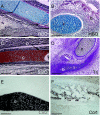
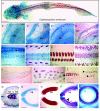
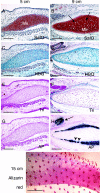
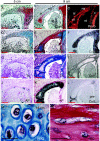

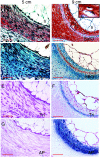
References
-
- Ballard WW, Mellinger J, Lechenault H. A series of normal stages for development of Scyliorhinus canicula, the lesser spotted dogfish (Chondrichthyes: Scyliorhinidae) J Exp Zool. 1993;267:318–336.
-
- Benjamin M. Hyaline-cell cartilage (chondroid) in the heads of teleosts. Anat Embryol (Berl) 1989;179:285–303. - PubMed
Publication types
MeSH terms
Substances
Grants and funding
LinkOut - more resources
Full Text Sources

